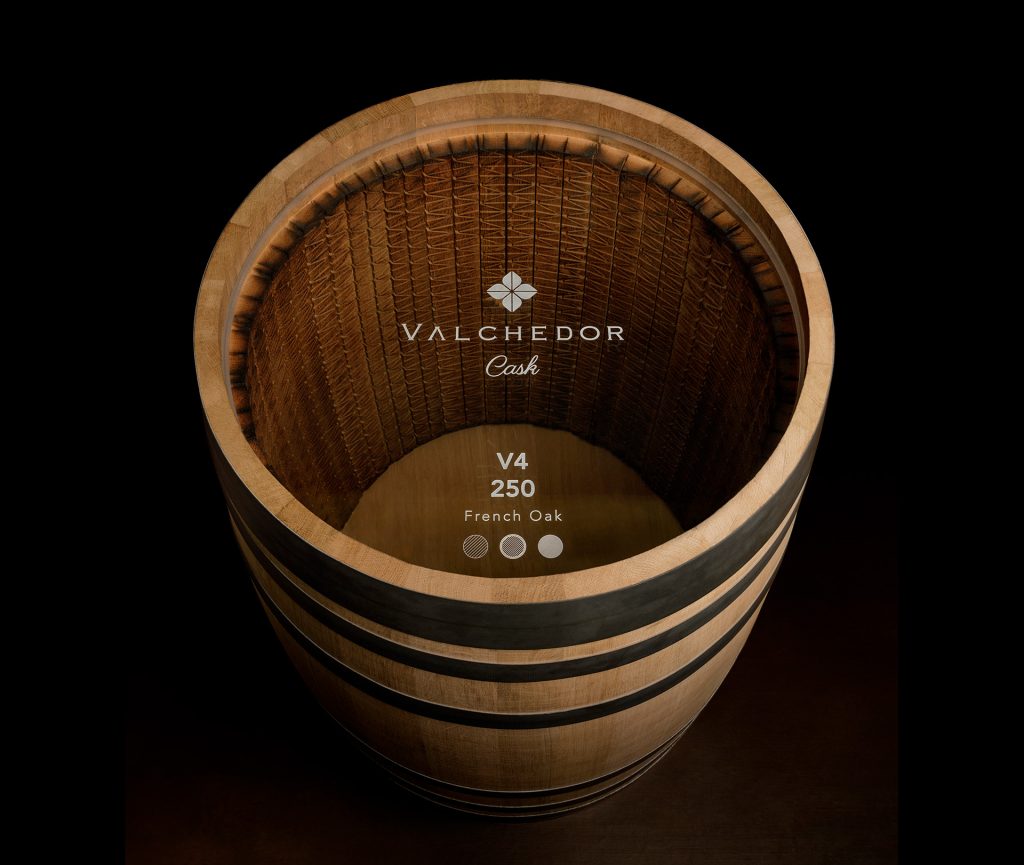Whisky beyond tradition
Whisky—a timeless symbol of excellence and refinement, with roots stretching back centuries. It’s a spirit that tells stories of tradition, craftsmanship, and passion. But hold onto your glasses, folks, because this classic elixir is getting a 21st-century makeover! In a world where technology is revolutionizing everything from how we communicate to how we drive; whisky isn’t getting left behind.
Artificial intelligence is crafting blends that tantalize the palate in new ways, blockchain is ensuring every drop is authentic, and NFTs are turning bottles into digital investments. While some purists might raise an eyebrow (or a glass) at these innovations, there’s no denying that tech is injecting fresh excitement into the whisky scene.
These advancements keep whisky relevant and thrilling for modern consumers, with the global whisky market projected to reach $108 billion by 2025. Let’s take a fun look at the most innovative—and sometimes controversial—technologies stirring up the industry right now!

AI Revolutionizing the whisky world
Artificial Intelligence (AI) is making waves in the whisky industry by offering new ways to analyze, predict, and personalize. Distilleries can now leverage AI algorithms to crunch massive amounts of data—recipes, sales figures, customer preferences—to predict which blends will be the next big hit. This fresh approach has given rise to “AI whisky,” a modern twist on crafting this traditional drink.
Big names like Beam Suntory are using AI to fine-tune their blending processes, anticipating how flavours will meld in each batch before bottling. In 2019, Mackmyra Distillery in Sweden made headlines by launching the world’s first AI-generated whisky, created in collaboration with Microsoft’s AI platform and Finnish tech company Fourkind. AI analyzed over 70 million possible combinations to recommend a recipe that would likely appeal to whisky lovers. This not only boosts efficiency and quality but also offers us, the consumers, exciting new taste experiences and a wider variety of products.
But it’s not just about blending. AI is helping in other areas like fermentation monitoring, flavour analysis, and distillation optimization. For example, by analyzing temperature sensors and pH meters, AI can predict fermentation times, leading to more consistent products. Companies like Diageo, Pernod Ricard, and Ardbeg are using machine learning to forecast flavour profiles and quality during maturation, creating more balanced and precise blends. AI tools can even simulate years of maturation data to anticipate how a whisky will taste after a decade or more in casks, speeding up R&D processes.
And for those who love a bit of tech flair, virtual and augmented reality are enhancing the consumer experience. Imagine virtually touring a distillery, learning about the production process, and exploring different whisky varieties—all from your couch! This innovation could boost engagement and interest, especially among younger generations. Johnnie Walker, for instance, created an AR experience where consumers scan their bottle labels to unlock stories and tasting notes, merging whisky with a new digital layer of storytelling.
Data Analytics in the whisky industry
Data analytics has become a cornerstone in whisky’s evolution. Since the early days, distillers have used this tech to understand consumer preferences and tailor products to individual tastes. By collecting and analyzing data from various sources, they’ve increased efficiency, reduced waste, and crafted more precise marketing strategies. In fact, McKinsey & Company estimates that data-driven insights can lead to a 25% improvement in productivity in industries like beverage production. As analytics technology advances, its role is set to become even more crucial.
Just like whisky matures over time, so does data analytics powered by AI. The more “mature” these processes become, the more value we can extract from data. In our data-driven world, the ability to tap into this value is key. Achieving maturity in analytics and AI requires solid infrastructure and continuous evolution—much like whisky aging in barrels. Organizations reaching high maturity levels are those utilizing a wide range of data, investing in analytics, and prioritizing AI initiatives as a core part of their business strategy.
Notable examples include Beam Suntory, owner of iconic brands like Jim Beam, Maker’s Mark, and Laphroaig. They’ve optimized production using data analytics to manage inventories and plan their supply chain, achieving greater efficiency and cost reductions. The Macallan, Scotland’s renowned distillery, has used analytics to understand customer buying patterns, tailoring offerings to meet individual needs and strengthening their reputation as a luxury brand. By tracking purchase trends, Macallan discovered that customers sought limited editions, so they began to offer more exclusive, high-end bottles.
Chivas Brothers (known for Ballantine’s and Chivas Regal) has implemented robots in warehouses for efficiency and brought in data analysts to interpret the massive info generated by automation. Companies like Diageo have partnered with Cambridge University to study barrel aging’s influence on flavour, using advanced analytics and machine learning to deepen their production understanding.

Whisky 4.0: The blockchain revolution
Blockchain technology is a game-changer with the potential to transform the whisky industry. By offering a secure and transparent way to track the origin, authenticity, and ownership of whisky products, blockchain can significantly impact the market. Think supply chain traceability, anti-counterfeiting measures, pricing transparency, and increased customer engagement.
Supply chain traceability is a standout advantage. Blockchain creates a secure, unchangeable record of the whisky’s journey from production to distribution, allowing consumers to verify authenticity and origin. Anti-counterfeiting measures benefit too, as blockchain provides a tamper-proof record, making it easier to identify and eliminate fake products. Plus, transparency in pricing and ownership allows consumers to see a bottle’s transaction history, influencing its value and price.
Producers like Ailsa Bay, owned by William Grant & Sons, have implemented blockchain to track their whisky from barley fields to bottling. Glenfiddich partnered with blockchain firm Arc-Net to create a system tracking their entire supply chain.
However, challenges remain. Blockchain can be complex, leading to confusion and errors in implementation. Low adoption rates might pose problems for those wanting to use it without partners on board, leading to interoperability issues. For example, if a distillery uses blockchain to track production, but the retailer or distributor doesn’t, the value of the system is diminished. The future of blockchain in whisky hinges on addressing these challenges and integrating the tech smoothly into existing processes.
Whisky, NFTs, and investment opportunities
NFTs (Non-Fungible Tokens) are introducing unique ways to invest in and collect luxury whisky. They allow digital assets to be authenticated, traded, and sold securely. NFTs can represent physical items like whisky, enabling investors to own a digital version of a physical asset. This means you can invest in expensive whiskies without a massive upfront cost. Tokenizing whisky lets enthusiasts diversify investments and potentially benefit from the asset’s appreciation.
NFTs can store vital data—provenance, age, bottling date—on a blockchain, verifying authenticity and preventing counterfeits. They can also track sales in the secondary market, maintaining a whisky’s history over time. The first whisky NFT, issued by Glenfiddich in 2021, included 15 limited-edition bottles, each paired with a digital certificate of ownership. The bottles sold out almost instantly, highlighting how NFTs are creating buzz in the luxury whisky space.
Tokenization opens new markets where producers can raise capital and increase production, making unique whiskies more accessible. Companies like BlockBar have led the charge by creating a marketplace where users can buy NFTs linked to high-end whisky bottles, adding an entirely new layer of value to the collector’s experience.
The enigma of accelerated aging
Accelerated whisky aging is gaining traction, offering both challenges and opportunities. Traditional maturation times can be a barrier for new competitors and complicate production planning, prompting the search for speedier methods. Traditionally, whisky must age for at least three years in oak barrels, but accelerated aging methods are cutting this time down significantly.
For example, let me introduce you Valchedor Cask, a pioneering solution from Spain for distillers and winemakers. Their innovative oak barrel features internal cuts expanding the liquid’s contact surface, allowing more efficient extraction from the wood compared to traditional barrels. Valchedor Cask can accelerate maturation by up to 500%, producing exceptional beverages in less time. It’s eco-friendly too, replacing two conventional barrels, boosting performance, and reducing environmental impact by 66%. Definitely something to watch for future productions!

Globally, companies like Lost Spirits Distillery in California are using methods like sonic waves, which mimic the vibrations of a barrel over decades, to age whisky in mere weeks. Terressentia, another U.S.-based company, uses a patented system called TerrePURE, which removes unwanted impurities and accelerates aging through ultrasonic waves. While some in the industry question the flavor authenticity of these methods, others see it as an innovative way to democratize whisky.
Eco-Conscious technologies to reduce environmental impact
Sustainability is a growing concern, and distillers are adopting tech and practices to reduce environmental impact and promote social responsibility. One strategy is the circular economy model, reusing production waste like barley husks instead of landfill dumping. Distillation waste can become biofuel or organic fertilizer, while barley husks serve as livestock feed or compost.
Renewable energy is another focus. Solar and wind power distillery operations, reducing fossil fuel reliance and greenhouse gas emissions. For example, Bruichladdich Distillery on the Isle of Islay runs entirely on renewable energy, and their barley is sourced from local farmers to minimize transport emissions. Some distilleries are even exploring hydrogen power to further reduce their carbon footprints.
In 2020, Glenfiddich launched an initiative to turn whisky by-products into biogas, used to fuel their delivery trucks. Meanwhile, Arbikie Distillery in Scotland has developed climate-positive spirits, using peas instead of wheat, which reduces the carbon footprint of their whisky.
Conclusions
What a journey we’ve had today! Now, let’s dive into the real debate. These innovations push us to stay curious as the whisky industry evolves. But we have to ask: How far can technology enhance whisky without overshadowing the craftsmanship that makes it so unique?
The rich flavors and aromas of a great whisky are shaped by years of experience, intuition, and tradition. Can algorithms truly replicate that?
As technology drives whisky into the future, are we preserving its essence or losing some of its magic along the way? Can tradition and innovation coexist, or are we witnessing whisky’s transformation into something entirely new?
What do you think? Let’s hear your thoughts!




